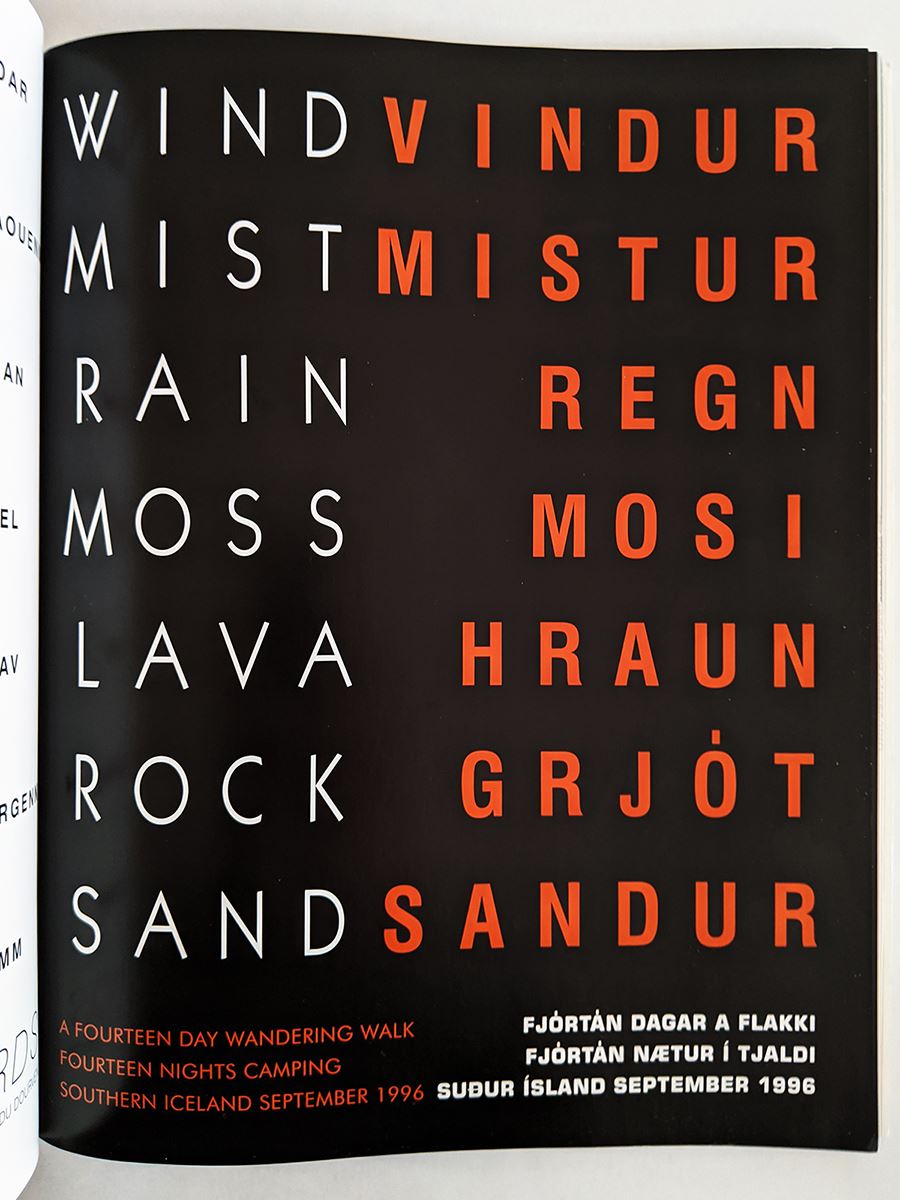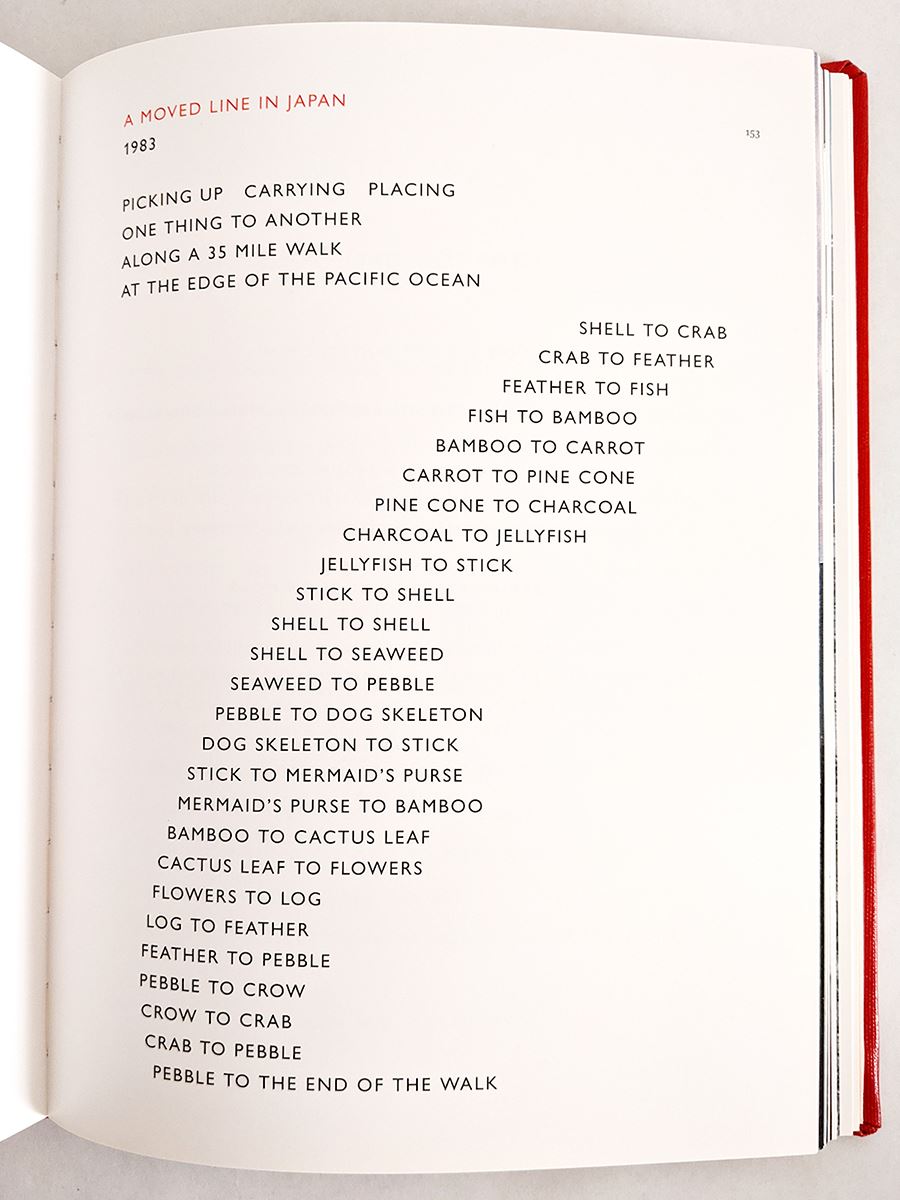Lists have been a part of literature from the classical epic to the postmodern novel, so it is no surprise that they have also made their way into artists’ books. In the essay “Absurd Catalogues: The Functions of Lists in Postmodernist Fiction,” Jan Alber writes that postmodern lists “celebrate variety and plurality by illustrating that individual entities cannot (or should not) be forced into a rigid system of order; the lists...thus invite us to adopt a playful attitude which closely correlates with the capacity of ‘letting things be’ advocated by Zen masters.” The philosopher Ian Bogost ties enumeration to a particular branch of recent philosophy, including New Materialism, Object Oriented Ontology and Speculative Realism. I am lumping these movements together for the sake of simplicity and to provide as many access points as possible to readers, but the important feature they share is a rejection of idealism and correlationism — they assert that there is a real world outside the human mind. Bogost notes that philosopher “Quentin Meillasoux uses the phrase ‘the great outdoors’ to describe the outside reality that correlationism had stolen from philosophy.” I argue that it is no coincidence that Hamish Fulton and Richard Long, two artists whose practices are based literally and figuratively in the great outdoors, use lists prominently in their artists’ books.Though Fulton and Long’s artists’ books precede Bogost’s theory, they provide an excellent example of what he calls ontography. Bogost terrms ontography “a general inscriptive strategy, one that uncovers the repleteness of units and their interobjectivity” and writes that “an ontograph is a landfill, not a Japanese garden. It shows how much rather than how little exists simultaneously, suspended in the dense meanwhile of being.”Catalogues and monographs reveal the challenge presented to critics by both artists’ use of text. Many writers can only say what the writing isn’t. Paul Moorhouse’s assessment of Richard Long’s use of text is typical: “Neither poetry nor straightforward prose, the structure of such texts is closer to sculpture than to literature, arising from the connection and inter-relation of words, ideas and experiences.” Ontography gives the reader a positive language to grapple with what text is — or, more accurately, does — in the work of Fulton and Long.

Page 153, Photography © Richard Long, extracted from: Richard Long: Heaven and Earth, 2009, Reproduced by permission of the Tate Trustees.
The role of the human artist is arguably more central to Long’s work. While Fulton seeks to leave nothing but footprints, Long alters the land and uses natural objects as materials for his art. Even so, he complicates the idea of agency in much the same way as new materialist theorists like Bogost. His 1983 work,
A Moved Line in Japan, entails “PICKING UP CARRYING PLACING / ONE THING TO ANOTHER / ALONG A 35 MILE WALK / AT THE EDGE OF THE PACIFIC OCEAN.” After this introduction, the piece proceeds in the following manner: SHELL TO CRAB / CRAB TO FEATHER / FEATHER TO FISH / FISH TO BAMBOO / BAMBOO TO CARROT — and so on. Long is acting, but on whose behalf? The emphasis is on the relationships among objects, of which Long is just one. Rather than documenting his actions as an artist, Fulton’s work shows the impossibility of recreating the experience of the walk. Anne Moeglin-Delcroix writes, “He does not seek to overcome the separation between experience and representation, but expresses it through his books. This also explains the increasing presence of words...first a simple caption accompanying the image, they then become a part of it and more recently have sometimes replaced it.” Lists are a particularly effective way to access this tension between presence and absence. Alber observes that “catalogues...frequently begin as assemblages of objects. But then, they gradually evacuate language of presence, leaving only word-lists behind.”

Works of Art © Hamish Fulton, extracted from: Hamish Fulton: Walking Journey, 2002, Reproduced by permission of the Tate Trustees.
Both artists also align themselves with the new materialist approach by rejecting the landscape tradition. Consider Fulton’s sparse piece,
A Fourteen Day Wandering Walk Fourteen Nights Camping Southern Iceland September 1996: WIND / MIST / RAIN / MOSS / LAVA / ROCK / SAND. By comparison, Moeglin-Delcroix characterizes landscape as “taking nature as interlocutor, projecting one's sensibility or imagination into it” — a process “by which nature is not considered in itself but for the sake of what it reveals about the artist contemplating it.” Fulton and Long pursue neither representation nor interiority. They flatly present the inadequacy of such attempts to convey the outdoors, in part by using lists, which Bogost shows “are perfect tools to free us from the prison of representation precisely
because they are so inexpressive.”In part two of this post, I will further examine the boundary of experience and representation by examining Fulton and Long’s continued use of photography, and how photography can be ontography.
Works Cited
Alber, Jan. "Absurd Catalogues: The Functions of Lists in Postmodernist Fiction." Style 50, no. 3 (2016): 342-58. doi:10.5325/style.50.3.0342.
Bogost, Ian. Alien Phenomenology, or, What It's Like to Be a Thing. Minneapolis: University of Minnesota Press, 2012.
Long, Richard, and Clarrie Wallis. Richard Long: Heaven and Earth. Tate Publishing, 2009.
____________ and Paul Moorhouse. Richard Long: a Moving World. Tate St Ives, 2002.
Moeglin-Delcroix, Anne. Ambulo Ergo Sum. Nature as Experience in Artists Books / Lexpérience De La Nature Dans Le Livre Dartiste. Köln: Buchhandlung Walther König, 2015.
Wilson, Andrew, et al. Hamish Fulton - Walking Journey: Exhibition: Tate Britain, London, 14 March - 4 June 2002: Catalogue. Tate, 2002.
Levi Sherman is an interdisciplinary artist and designer in Columbia, Missouri.

